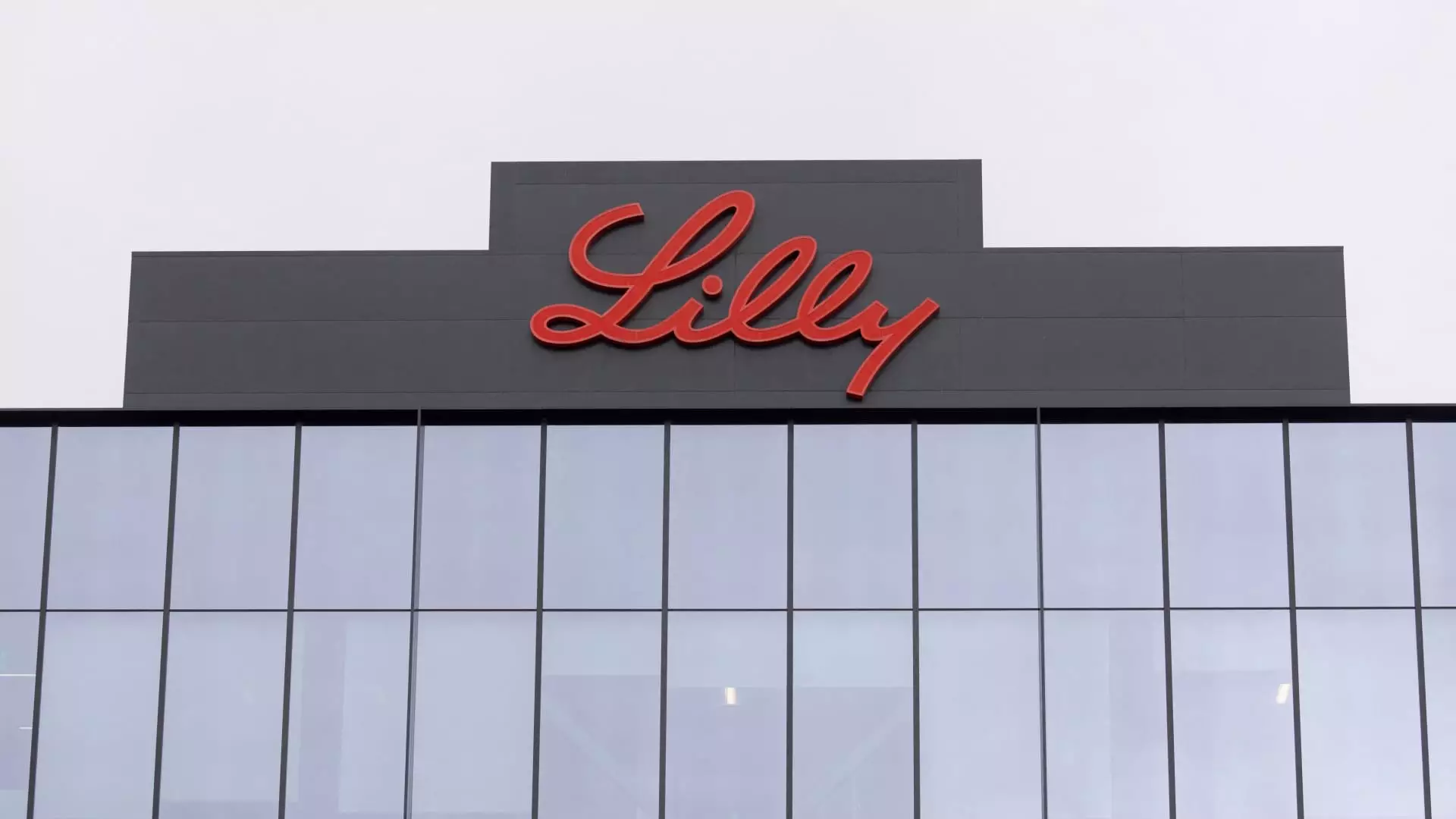Eli Lilly and Company, a major player in the pharmaceutical industry, has encountered significant headwinds in the third quarter of the fiscal year. Despite the promise of its pioneering treatments, the company recently reported results that fell short of both profit and revenue expectations. This disheartening performance has sent ripples through financial markets, underscoring the turbulence that can accompany innovation in the healthcare sector.
Eli Lilly’s lackluster third-quarter results led to a sharp decline in its stock price, dropping approximately 10% in premarket trading. Analysts initially projected a stronger performance based on the company’s advantageous position in the diabetes and weight loss markets. However, disappointments arose from meager sales of its anti-obesity medication Zepbound and diabetes treatment Mounjaro. In a swift move to recalibrate expectations, Eli Lilly adjusted its full-year earnings forecast, now estimating adjusted earnings per share between $13.02 and $13.52, a significant downward revision from earlier guidance of $16.10 to $16.60.
Adding to the financial woes, Eli Lilly attributed its third-quarter struggles to a staggering $2.8 billion charge linked to its acquisition of Morphic Holding, a firm specializing in bowel disease treatments. This massive outlay has not only impacted profit margins but also prompted a broader reevaluation of revenue expectations. The company now anticipates total sales between $45.4 billion and $46 billion, a reduction from the previously projected figure of as much as $46.6 billion.
In a more granular look at Eli Lilly’s financial statements, a marked disparity emerged when comparing actual figures to Wall Street’s anticipations. The company reported earnings of $1.18 per share, which was notably below the expected $1.47. Additionally, revenue for the quarter came in at $11.44 billion, significantly shy of the expected $12.11 billion. This gap raises concerns about the underlying health of Eli Lilly’s product pipeline and its ability to meet investor expectations.
Eli Lilly debuted Zepbound in the U.S. market nearly a year ago, and this quarter represented its third full reporting period. Despite achieving $1.26 billion in sales for Zepbound, the amount fell well below analyst anticipations of $1.76 billion. Conversely, while Mounjaro saw revenue climb to $3.11 billion—up dramatically from a year prior—it too was beaten by expectations of $3.77 billion. These discrepancies suggest a disconnect between initial market excitement and post-launch performance, calling into question the sustainability of demand for these medications.
While demand for Eli Lilly’s incretin-based therapies has soared, the challenge of maintaining supply has been an ongoing concern. Competition from compound pharmacies offering cheaper alternatives to branded drugs only exacerbates the situation. Recently, the FDA removed tirzepatide, the active ingredient in both Zepbound and Mounjaro, from its shortage list. This could potentially harm Eli Lilly’s monopoly on the market as compounding pharmacies mobilize to provide their varied formulations.
The narrative of supply versus demand in the pharmaceutical industry can be convoluted. Eli Lilly’s Chief Executive Officer, David Ricks, mentioned in a recent CNBC interview that the disappointing sales of Zepbound and Mounjaro weren’t necessarily due to supply constraints but rather inventory reductions among wholesalers. Leadership also backtracked promotional efforts for Zepbound, indicating that logistical issues and customer frustrations had to be addressed before ramping up advertising.
Despite the challenges, Eli Lilly has expressed optimism about future manufacturing capabilities. Ricks projected a 50% expansion in production during the latter half of 2024 compared to the same timeframe in the previous year. Moreover, plans for even greater capacity enhancements are anticipated by the close of 2025, likely informed by the lessons learned during this tumultuous quarter.
Eli Lilly faces a complex and challenging landscape as it adapts to financial setbacks, competitive pressures, and evolving consumer needs. The company’s recent performance serves as a reminder of the inherent unpredictability within the pharmaceutical industry, where even the most promising products can encounter obstacles in the marketplace. How Eli Lilly navigates the coming quarters will be vital in determining its position moving forward within this rapidly changing sector.

